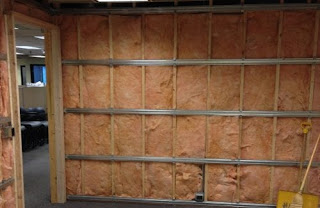Installing Floating ceiling systems
How to hang the floating ceiling systems on your own? Installing these ceilings on your own can take some time. Installing either a ceiling or a tile will need almost 16 hours of work, longer if some unusual situations happen. Thus, the job is best undertaken by at least a couple of people that are somehow experienced in doing technical jobs across the house. Nonetheless, one does not truly require any particular proficiency to do the job, as the methods and the tools that are in the process used are pretty fundamental.
You generally don’t require a permit to work on your floating ceilings, but it is always a great idea to check the regulations at your local building department. It is better to be safe than sorry while installing floating ceilings or pre assembled acoustic enclosure.
Floating ceilings are meant to be hung from the ceiling joists with a metal grid. This creates the opening between both the ceiling and the joists where pipes, wires and ductwork can be installed and work on. A tile ceiling is either glued directly to the current ceiling or on the furring strips that are nailed and glued to the current ceiling for rooftop noise control.
Floating ceilings and acoustic fabric panels don’t have to look great in your house but also offers various benefits. They cover up wires; muffle sounds and cables support the lighting systems and frequently have fireproof features. An acoustical ceiling with tiny noise-trapping holes is the ceiling of preference for noisy rooms such as kitchens. Ceilings made of mineral fiber are a great choice for rooms with a possible fire risk. But for most purposes, a timeless floating ceiling is the best option, as they are simple to install and also light in weight.




Comments
Post a Comment